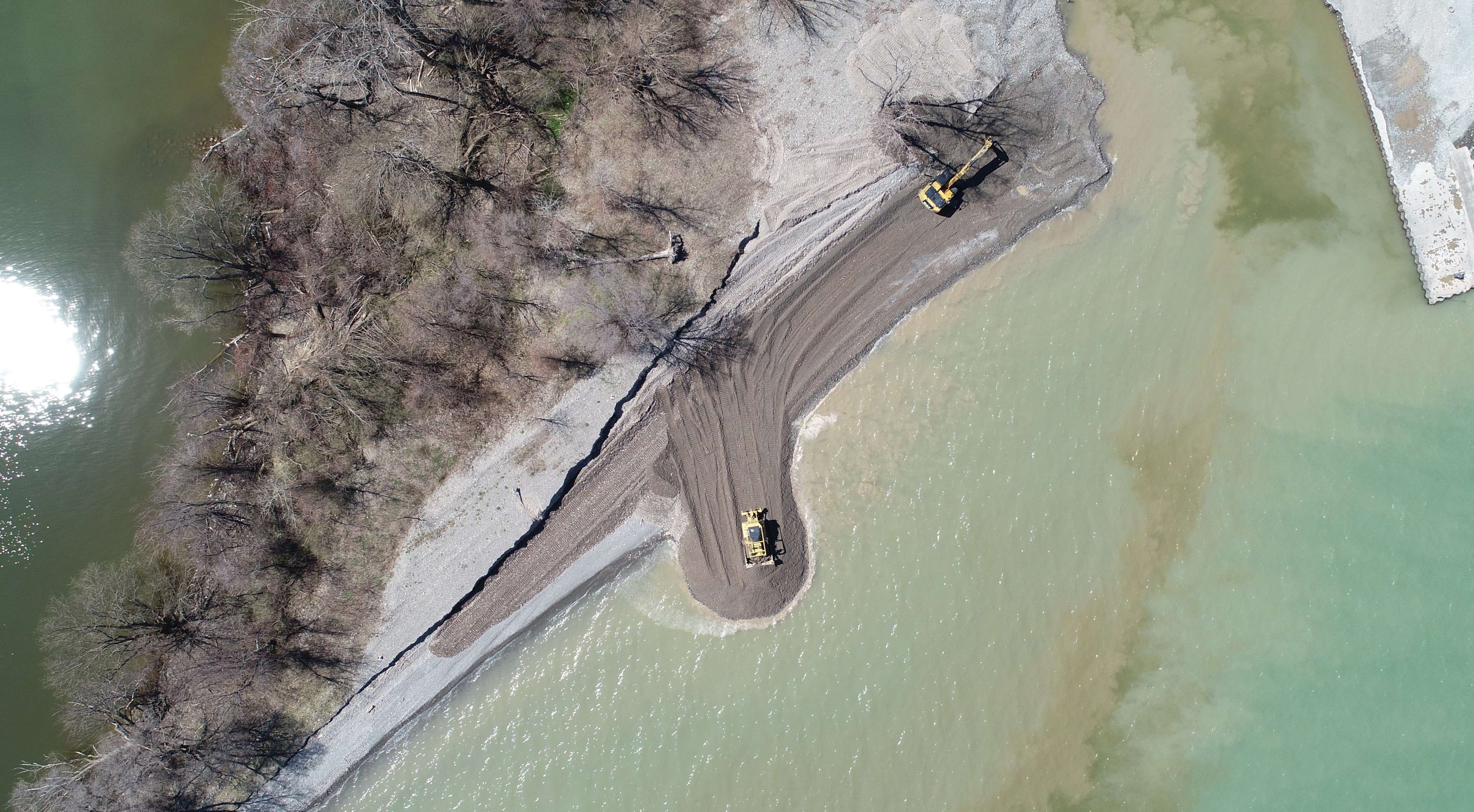
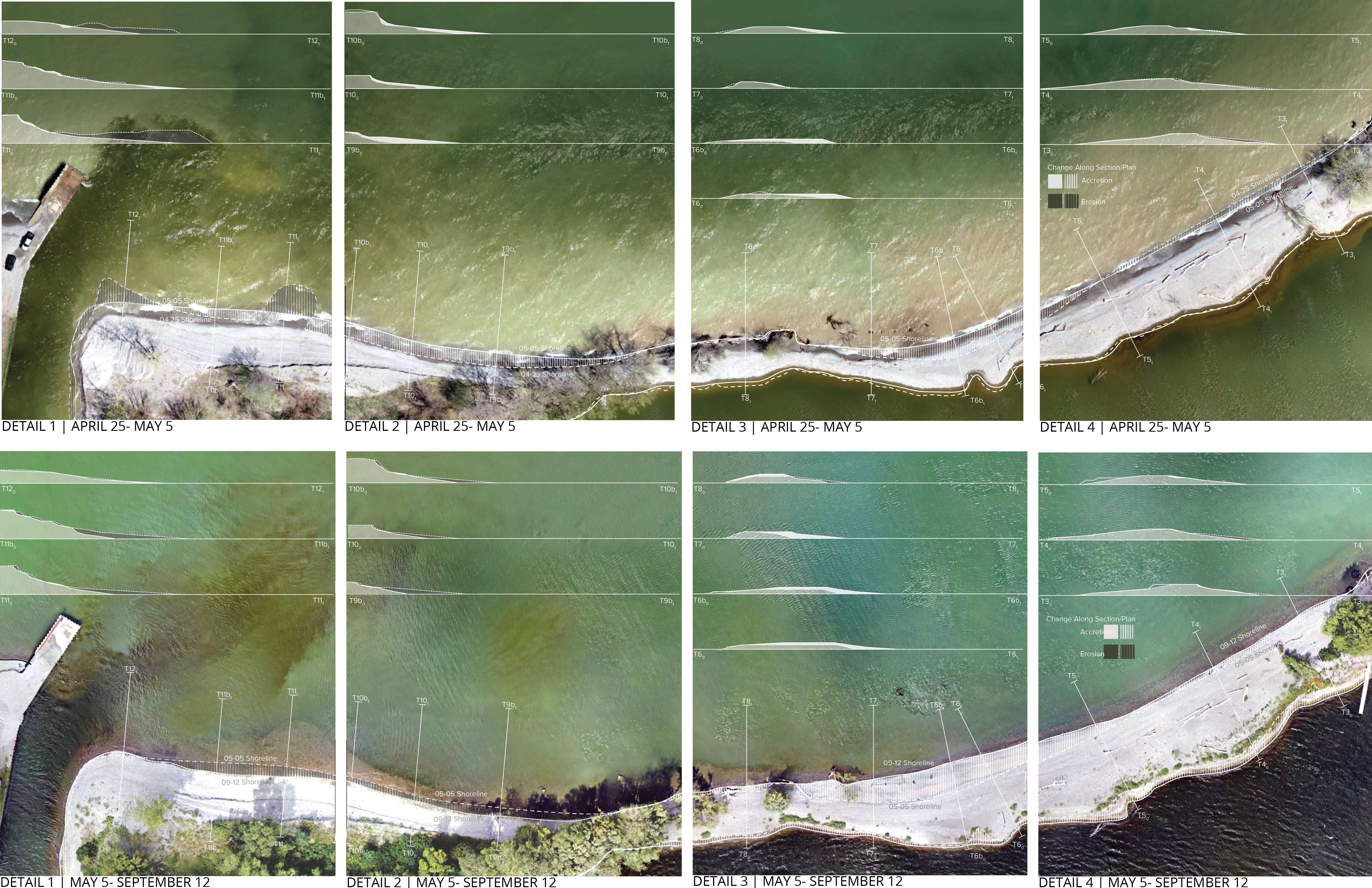
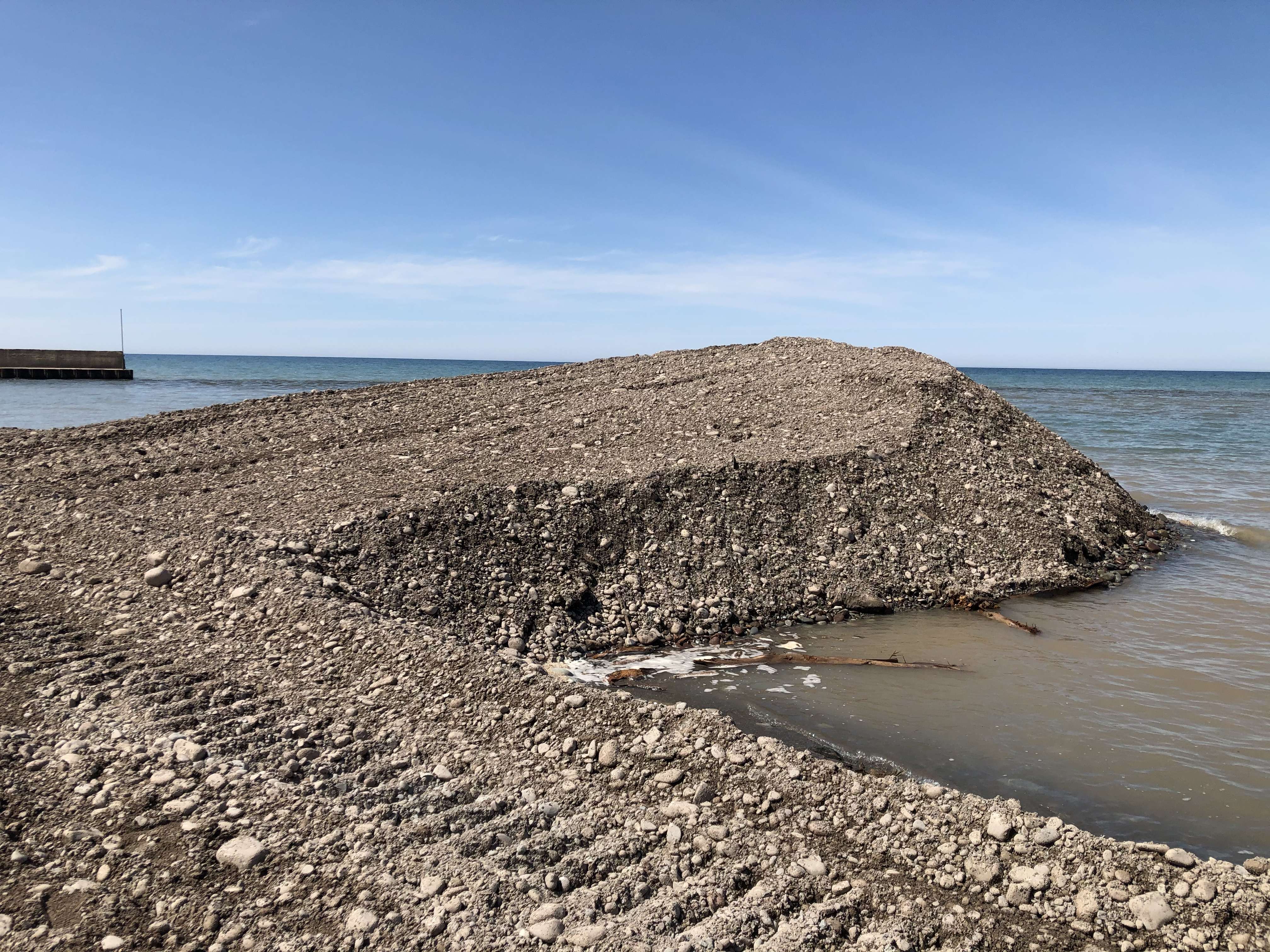
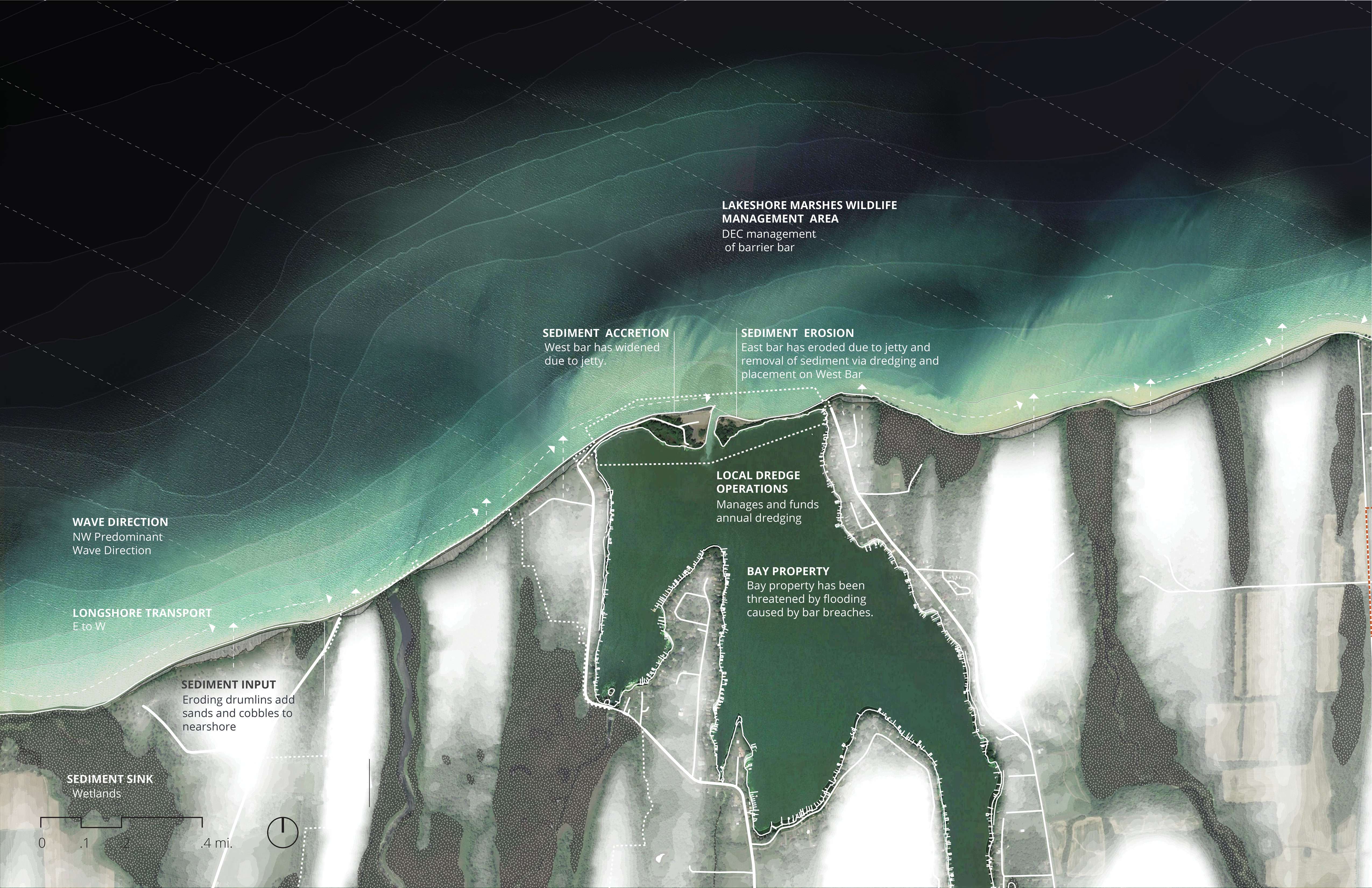
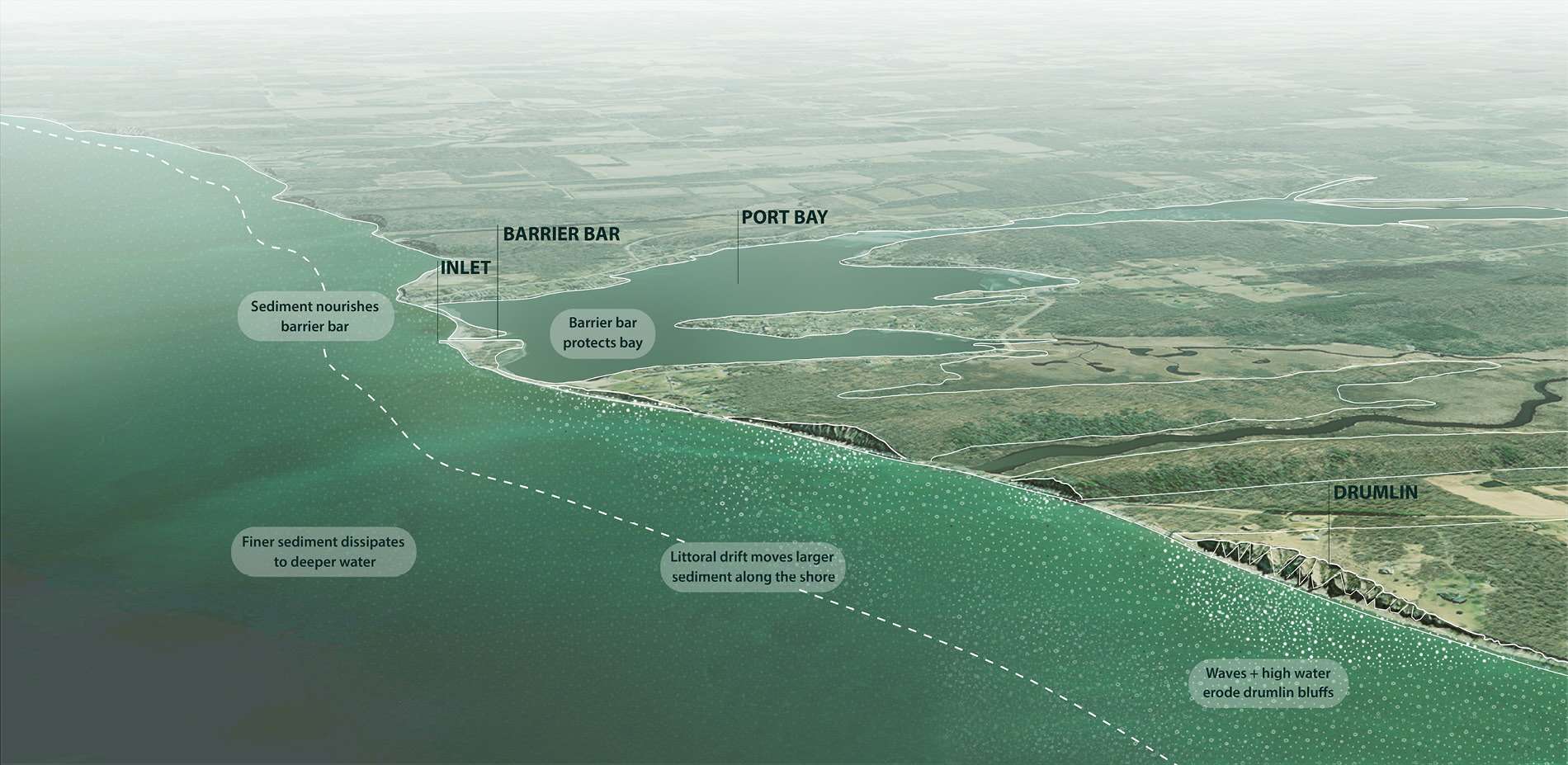
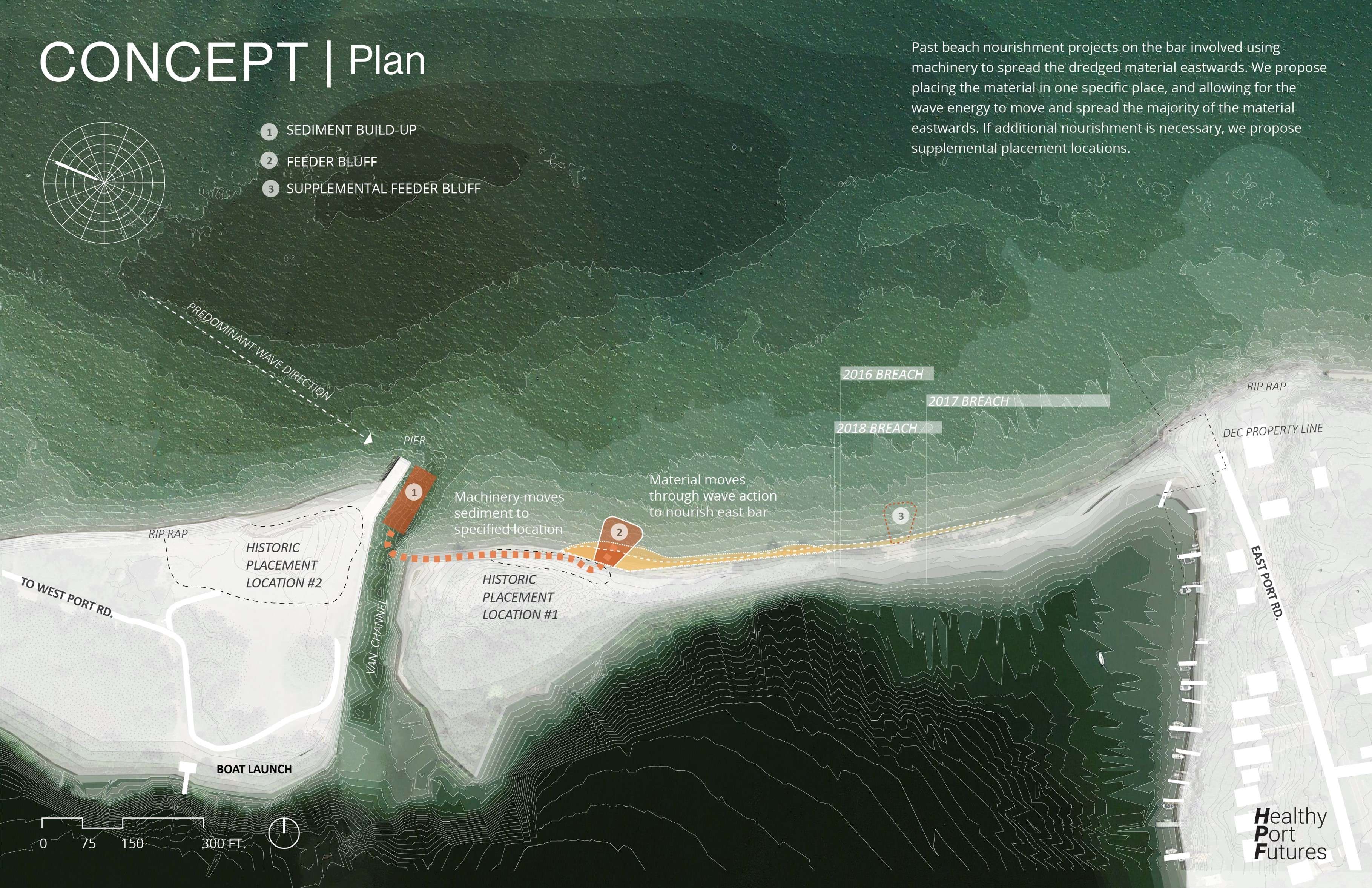
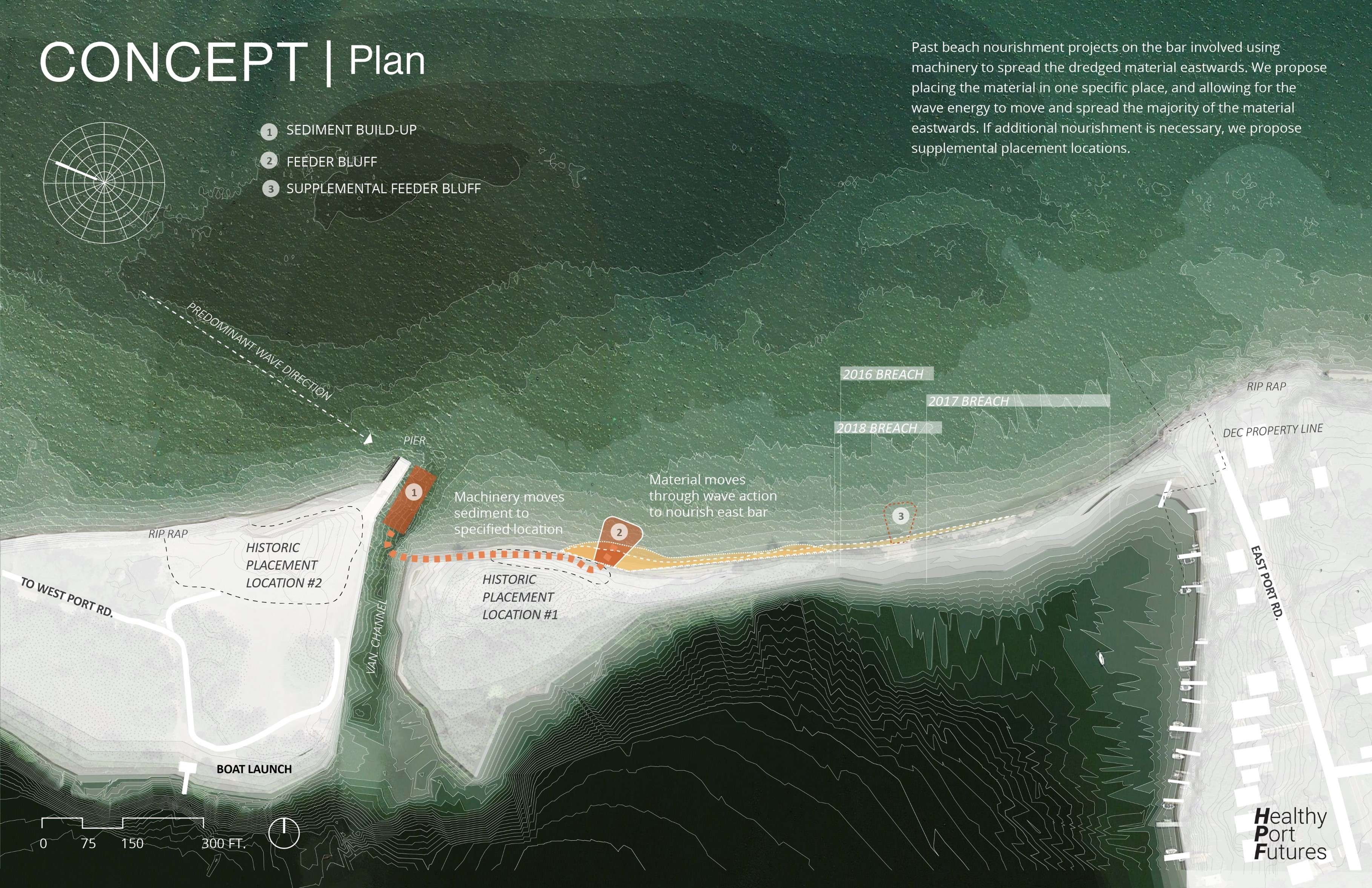
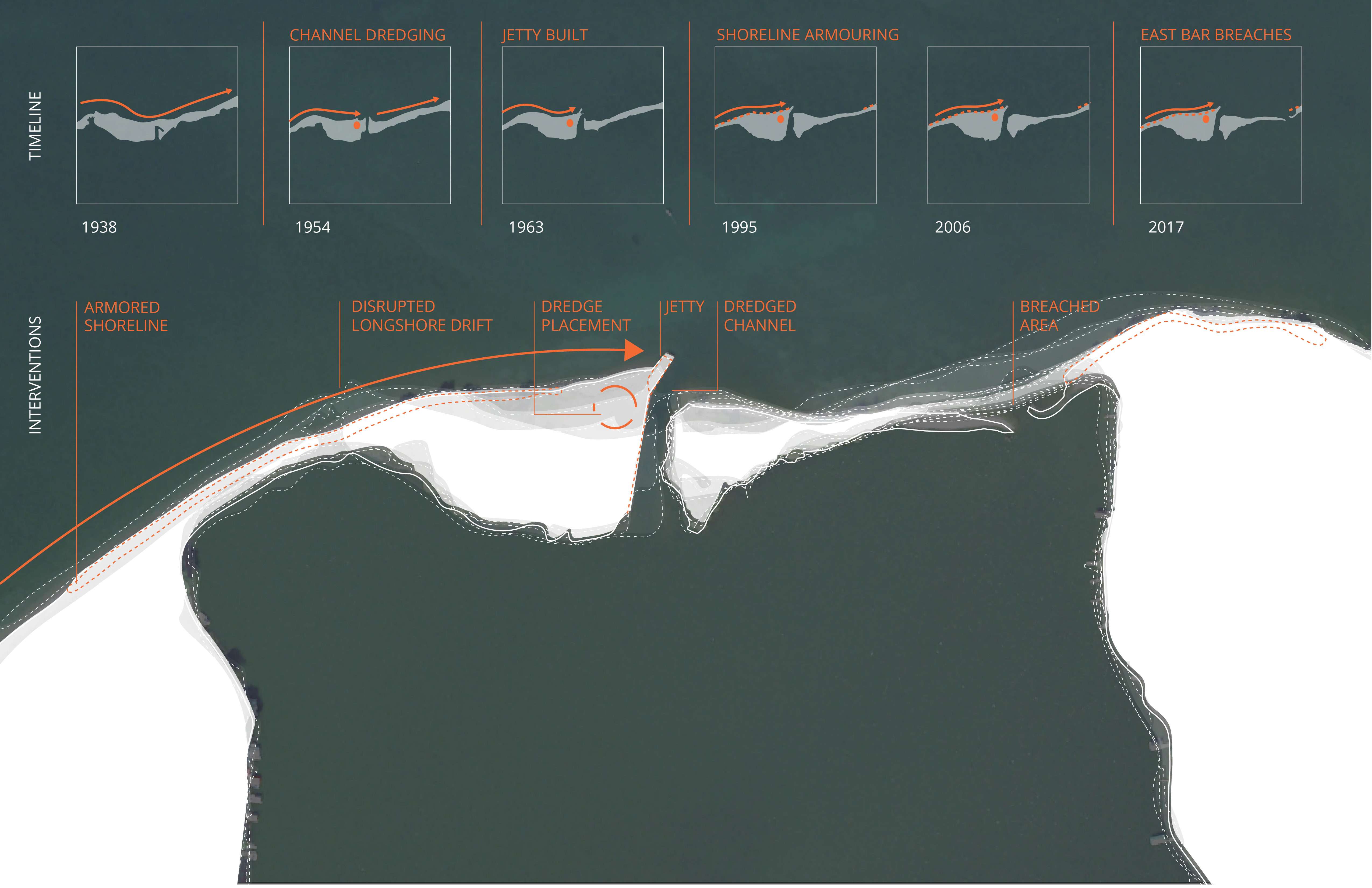
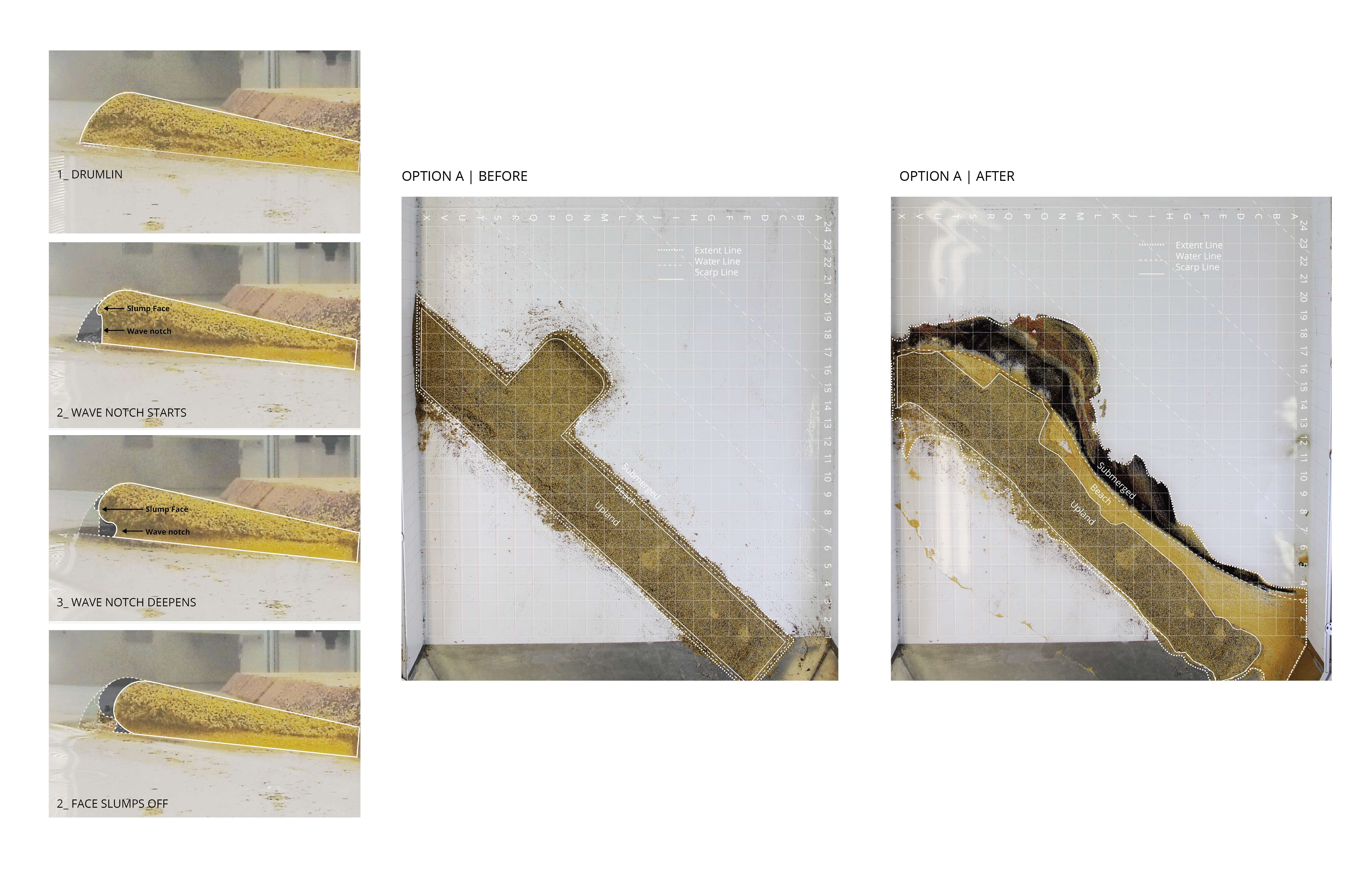
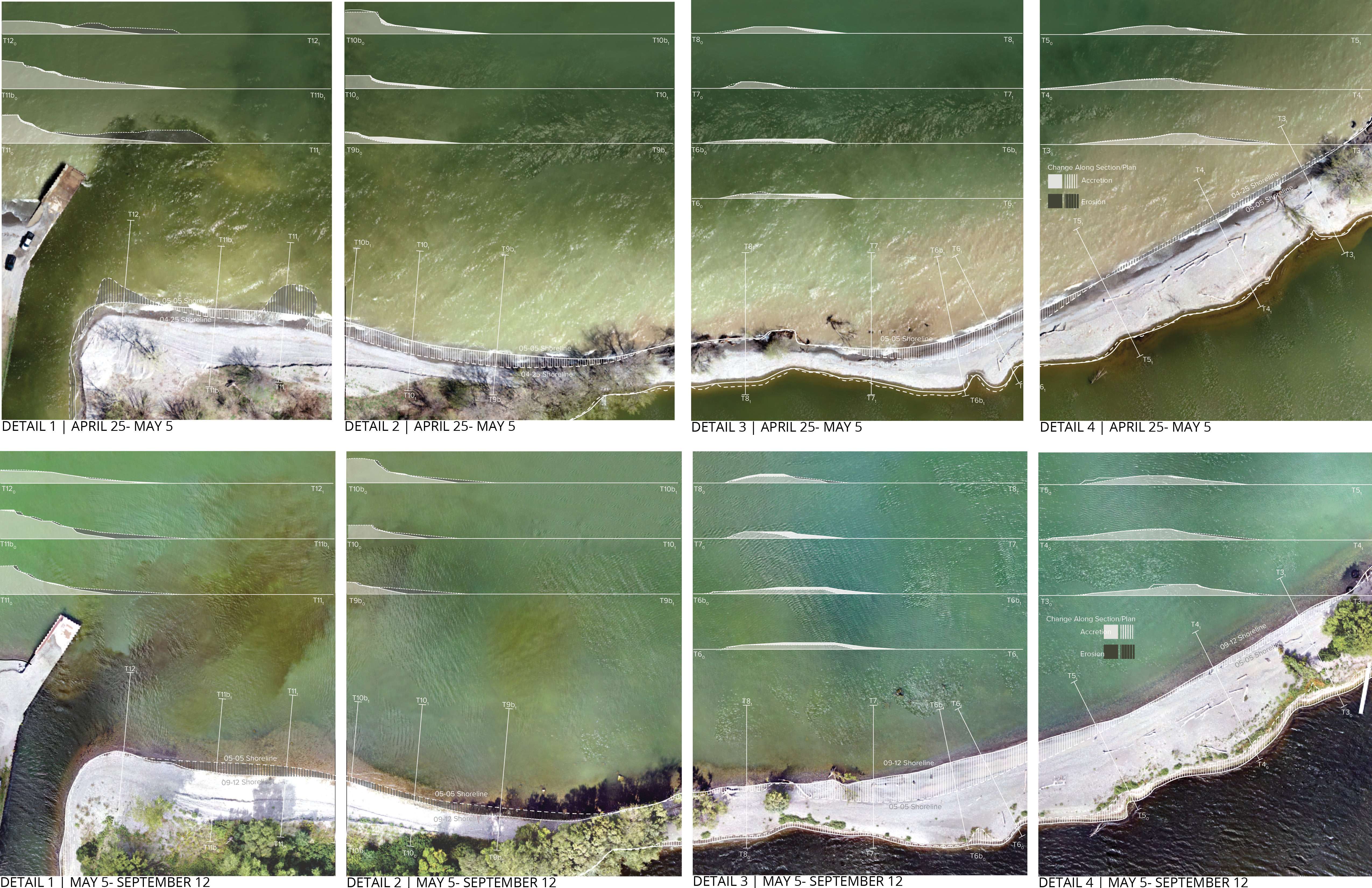
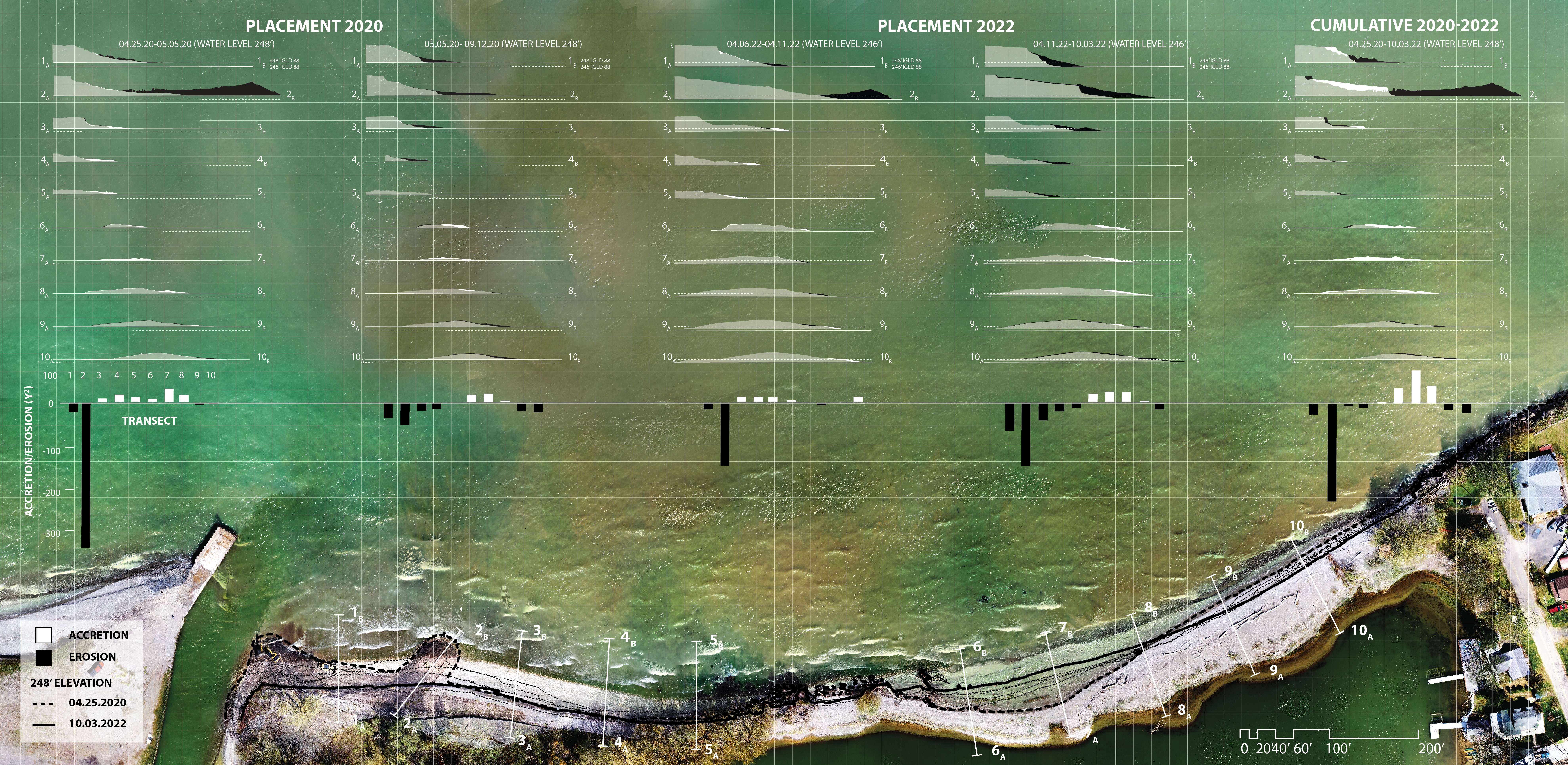

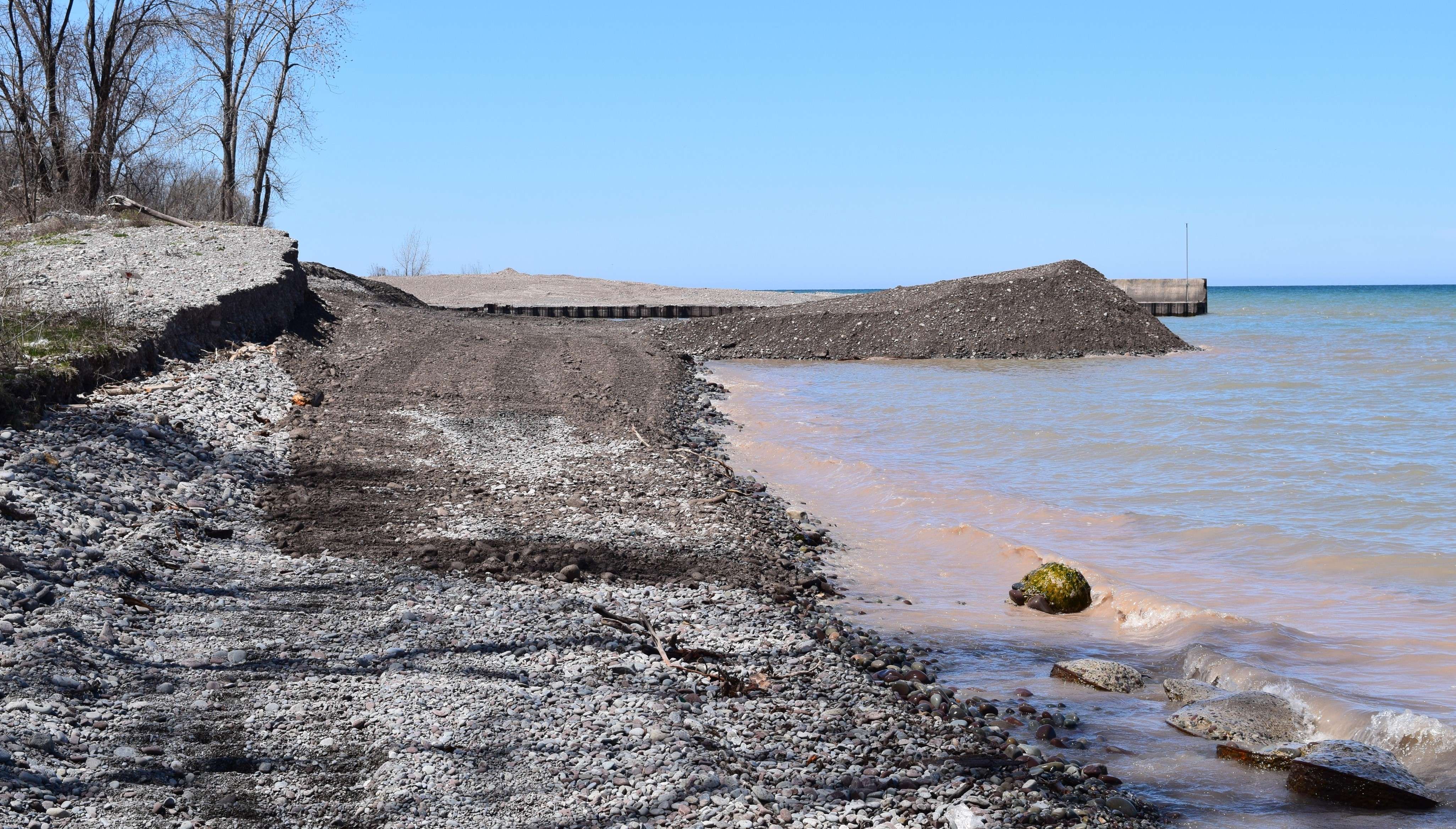
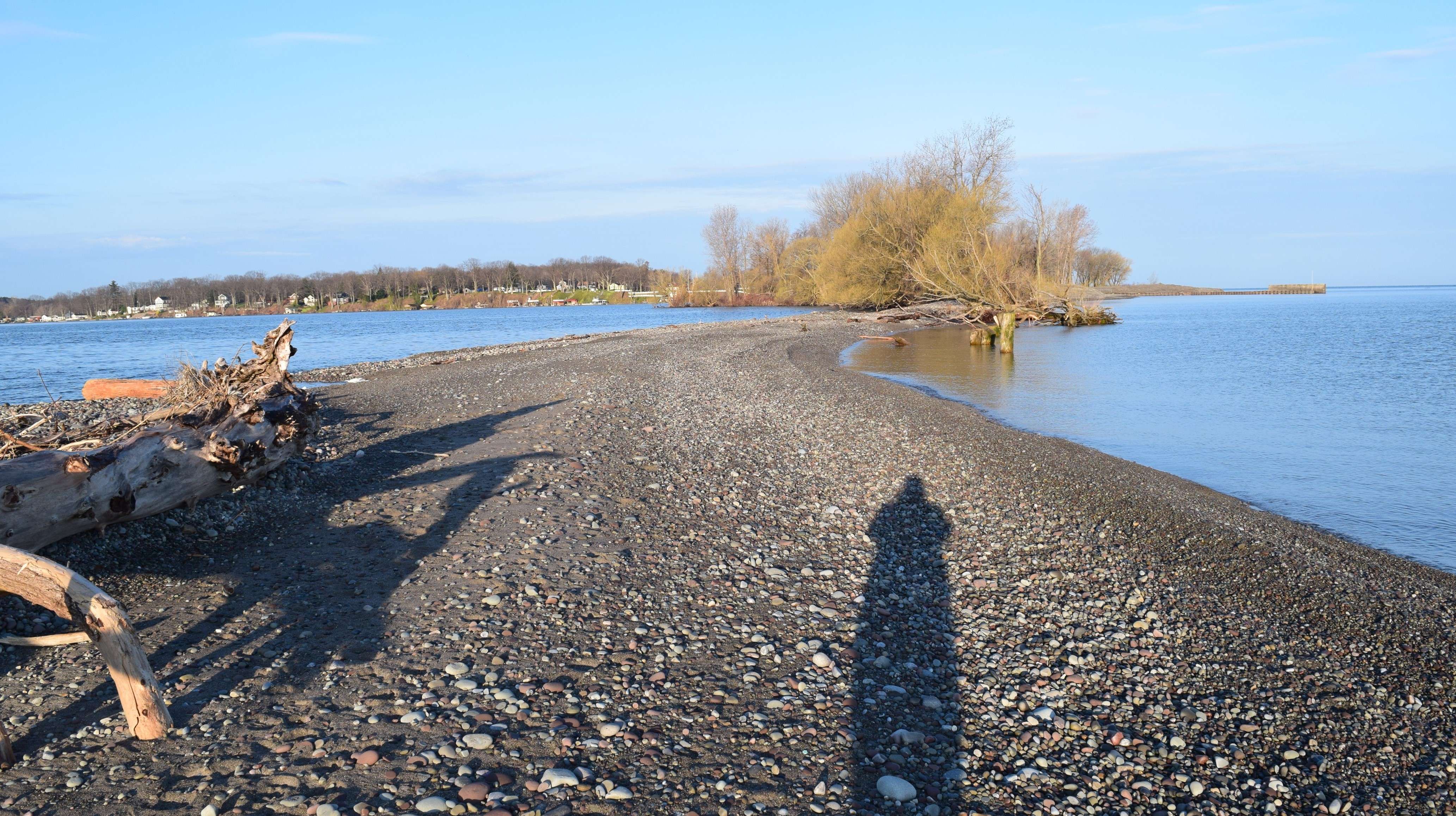
The Cobble Bell_Rosa Barba
The Cobble Bell
The Cobble Bell is an erodible landform remade every year in the community of Port Bay, New York. Located on the south coast of Lake Ontario, Port Bay is protected from the large waves and currents of the lake by a barrier bar. The regional landscape of coastal bays and the bars that protect them is a result of interaction between the lake and glacially-deposited drumlins. The movement of sediment from the erosion of these drumlins is fundamental to the nature of this landscape, but that movement has been disrupted since the 1960s due to the construction of a jetty and nearby shoreline armoring. The sediment that is dredged used to be place upland, removing the sediment from the nearshore landscape and slowly starving the barrier bar. This contributed to the breach of the bar in 2017, exposing the homes and docks of the bay to the force of Lake Ontario.
Our project shaped the dredged sediment into an ephemeral landform that works with the waves and currents over time to do the work of haulers and bulldozers normally used to restore a beach. The Cobble Bell is created from sediment dredged from the small navigation channel in the middle of the bar. We developed the concept through a combination of historical and precedent research, computational wave analysis, physical geomorphology modeling, and conversations with the dredging contractor, which are renewed each year.
The results, photographed and surveyed over five years (2020-2024), prove the sophistication and subtlety inherent in the landscape. The bar has stabilized, and now offers a variegated beach with sandy pockets and gravel strand lines, all sorted by wave action. The creation of the landform each spring serves as a dramatic event, drawing onlookers from the surrounding community. The Cobble Bell quickly erodes, dispersing along the coastal zone, before stabilizing over the summer, offering habitat and recreational opportunities while protecting the bay.
This project is difficult to categorize. It involves an ephemeral landform created from sediment produced through maintenance dredging of a small inlet. The landform is a sculpted earthwork that is remade every year as part of ongoing maintenance of the boat channel. As the landform is eroded by the waves, its sediment is redistributed onto the adjacent beach into the weak area of the barrier bar by those same waves, resulting in a wider beach and protection for the community behind the bar. We have put its initial cost at U$0 as it is not a capital project. We have also characterized it is an ephemeral installation, because the part we build is. However, its effects through time are much larger spatially. The construction is about 700 square meters each year, but the effect is across the beach and is at least 12,500 square meters each year. Finally, the performance is doubly infrastructural-- maintaining the navigation channel, and rebuilding of the barrier bar that protects the homes and docks in the bay behind. For that reason, the subcategory could have been "infrastructures" or "restoration of natural spaces". I'm not sure which is best and leave it to the committee to change the subcategory if they see fit to do so. We have chosen "ephemeral installation" because we often talk about this project in terms of its data and performance (more apt for "restoration" and "infrastructure" subcategories) but consider its artistic and aesthetic dimensions to be fundamental and most worthy of consideration.
